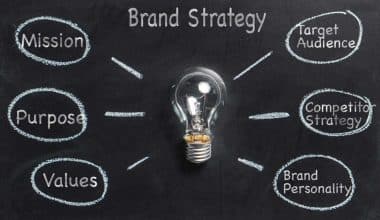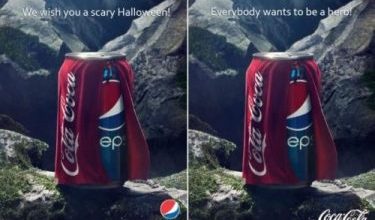Brand Experience (BX) is a marketing strategy that brings together the customer experience and the staff experience to increase sales and customer acquisition rates. This creates a feeling of goodwill, dependability, or trust. This article talks about the brand experience for a marketing agency or manager of a company, its design, and why it is important.
Overview
“Brand experience” is an example of an experiential marketing strategy that tries to change how people think about a business or its goods by putting them in an environment designed by the brand itself. Companies try to get people to associate their brand with a specific need or feeling by giving them a lot of opportunities to interact with it.
Brands reach a point where they change. Consumers today have more choices than ever before at a time when it has never been cheaper to switch. When creating new customer acquisition and retention strategies or making changes to current ones, brands need to pay more attention to how potential customers feel. Also, they need to have the money to meet the current and future needs that their prospects have told them about.
Managing a company’s brand isn’t new, but how it’s done now is old and doesn’t work well. “Brand experience management” is something that business leaders depend on to help them get and keep customers in the modern economy. Seventy percent or more think that BEM will help their business stand out from competitors and become better known.
Brand experience management, like customer experience management, helps businesses boost customer loyalty and retention by learning which interactions bring in new customers and which ones turn them away. In the long run, this approach pays off in both quality and quantity: Forrester says that market winners in brand experience management usually make millions of dollars because of it.
Features of Brand Experience
Many things affect how a customer thinks about a brand. Businesses use a lot of the things below to change how people feel about their brand.
- The energy and personality of a brand can be used to make ads for a small or large group of people.
- Colors are carefully chosen by the people who make ads, websites, and other marketing materials to get specific responses from their target groups.
- Businesses often use holidays, national festivals, and personal successes as part of their marketing strategies to connect with the people they want to reach.
If a customer is happy with the service they get, they are more likely to buy something or come back.
- Companies try to have a strong online presence so that customers will think of them when they need something that their goods or services can fill. Businesses make their names known in the digital world through their websites, social media accounts, weblogs, and mobile apps.
- Discounts, sales, and reward programs all work to bring in new customers and make shopping more enjoyable overall.
- Customers will remember a company for a long time if it has catchy songs or slogans.
- Logos, brands, shop designs, and signs can all be made to make people feel a certain way, such as reliable, excited, or trustworthy.
- A company’s newsletter or press release often has the latest brand news, which is why many businesses post them regularly.
- Businesses sometimes hire spokespeople or pay to have their goods shown in movies or commercials so that people will see them.
Brand Experience Examples
Here are some different ways to experience a brand:
#1. Cadbury India
Cadbury India asked users for their thoughts on how to make a new kind of chocolate bar. Customers were told to go to the company’s chocolate bar platform, where they could pick and choose ingredients to make their own unique mix. Cadbury picked the best recipes after trying out all of the ones that were sent in.
Cadbury produced a more community-based brand experience by putting more emphasis on interaction than just reaction. This made it easier for customers to get involved and made them think that making chocolate bars was a group effort rather than a business.
#2. Dove
People liked the ad because it was honest and tried to make young girls feel better about themselves. By focusing on an emotional experience rather than a clear sales pitch, Dove was able to connect with its target audience and increase customer loyalty.
#3. Apple
Part of Apple’s success can be credited to the memorable brand experience it offers. Everything about the Apple brand, from ads to retail stores to product packaging, is meant to reinforce the company’s values of innovation, style, and usefulness.
Apple fans want its products because they are cool, sophisticated, and easy to use. Even when the company releases a new product, people look forward to it. When it comes to the four “Ps” of brand experience (perception, participation, personalization, and prioritization), Apple is a master at blending all four into its message. This puts Apple in people’s minds, whether or not they are currently shopping.
Brand Experience Marketing
Brand experience marketing and interactive marketing are the same things, but they are often confused with each other. This makes it hard to choose between the two ways to sell the product. Because social, digital, and mobile media are always changing, there is some overlap between these terms. However, there are important differences that a brand can use to its advantage.
One type of experiential marketing is “brand experience,” which is a wide range of actions meant to make people feel more connected to and excited about a certain brand. This includes corporate events, trying out stunts, making phone calls, talking to workers in person, using a brand’s website or app, and so on.
Experience marketing, event marketing, line events, and a lot of other words mean the same thing in marketing. All of these ways to advertise can help brands, but they’re missing one important thing: branding.
The main goal of marketing is to give a product or service a name. Brand experience marketing is a fluid branding idea that uses bigger and flashier advertising materials to do this. Now that you know the basics, let’s look at some cutting-edge brand experience marketing efforts from well-known companies.
#1. The Refinery29’s 29Rooms
The 29Rooms experience was made by Refinery29 for the modern woman who wants to know how to find balance and beauty in her life. These ghosts come to life in the 29Rooms show.
#2. Vans’ House of Vans
Another great example of a brand experience is the House of Vans, a store for the shoe company Vans. There are stops in NYC, BK, LON, and CH on this plan. The brand set up get-togethers for the skateboarding community to help people get to know each other better and appreciate their shared interests in skateboarding, movies, and music.
#3. The Raho Mast of Oyo
Oyo is an Indian company that runs more than 18,000 hotels in India. It is the second biggest hotel chain in the world in terms of the number of rooms it runs, after Marriott International. The 6-year-old startup is quickly expanding to the U.S., the U.K., and China, and as a result, advertising efforts are also growing.
Brand Experience Agency
Brand experience agencies work with their clients to create unique, memorable live event experiences that help them connect with their target audiences on a human level. They do this by taking a 360-degree look at the client’s business. The following is what the brand experience agency does:
#1. Assist in Developing a Product’s Selling Point
The most valuable brands in the world each have a mission statement that articulates why they are so successful. You probably know what I’m talking about, but maybe you’ve never written it down. A brand experience agency can assist you with honing your brand’s message and ensuring that it is consistently communicated across all of your company’s touchpoints.
#2. Establish Your Company’s Tone and Identity
With a unified brand voice and visual identity, your business will be instantly recognizable wherever in the world. You can get assistance with creating brand standards for both your verbal and visual identities from a marketing firm that focuses on brand experiences. In this way, you can rest assured that your target audience will have a uniform experience with your brand across all touchpoints.
#3. Refresh Your Brand’s Resources
You should update your website if you are working to define or improve your brand identity. You need the help of a skilled team composed of a writer, designer, user experience expert, technologist, and developer if you’re taking on a website redesign project.
#4. Branding Strategy Development
Your company’s own identity is taking form. You want to make the most of the opportunity to introduce your new image to the world. If your audience hasn’t been interacting with your brand, telling them to visit your new website won’t do you any good. You need a brand strategy to get the attention of those who haven’t heard of you yet. For that, we’ll need to use sponsored content. Depending on how much your brand has changed, this may need only minor tweaks to your messaging or a complete overhaul of your website. A digital marketing firm or brand experience agency can save you time and energy by creating all this for you.
Brand Experience Design
Brand experience design is being used more and more by designers to make goods and features that effectively promote a brand without hurting the user experience. Designers who focus on the business experience usually have both digital and physical design experience. It is vital for the designer to understand the company’s goals and branding plan. To understand what a good brand experience looks like, you need to know about the following design elements:
#1. Participation
Participation, rather than just watching, makes it more likely that customers will have a good opinion of the brand. Some examples of this are online idea forms and live question-and-answer forums, as well as in-person installations where customers can try out your products and give you direct feedback.
#2. Personalization
Generic marketing can get constant results, but tailoring your message to each customer can make them more interested. By combining user-provided data, social media exchanges, and other engagement data, it is possible to make more personalized efforts that help make connections between what customers want and what products are already on the market.
#3. Prioritization
It’s impossible for your brand’s experience to please everyone. Choosing certain brand indicators, like positive social mentions or repeat purchases, is a good idea because trying to reach every customer in every situation hurts efforts that are based on experience.
#4. Perception
How someone sees things is at the heart of what they experience. Through these exchanges, consumers can make connections between ads and their ability to hear, see, or feel. In the same way that certain smells can bring back happy memories from our childhood, brands that use the senses well in their marketing build better connections with their customers.
Brand Experience Manager
The following are the works of a brand experience manager below;
- The goal of a brand experience manager is to increase brand recognition, value, and loyalty. You do this by controlling your brand’s identity and working to improve how your target audience sees it.
- Manage, plan, measure, and change everything that your business does with customers.
- Brand-led marketing is replacing performance marketing as organizations recognize the long-term value of great brands. Because of this transition, marketers will need to adopt brand-building methods and track their brands’ performance.
Why Brand Experience Is Important
Brand trust grows when customers have positive experiences with the brand. Keeping loyal customers is good for your business’s finances, especially since it can cost up to five times as much to get a new customer as it does to keep an old one. If your customers have good experiences with your business, they may think highly of it and be more likely to buy from you. Other things to think about when it comes to the brand experience are:
- Strategies for branding. Increasing the exposure of your company by boosting the reputation of its brand in the market.
- Help from the regulars. Customers are more likely to buy from you again and tell their friends about your products if their experiences with your brand are reliable.
- People know the brand. Raising the value of your products makes it easier for people to trust and stay loyal to your brand.
The Strategy Development for the Brand Experience
The following is a good plan for a manager to use in building a brand business design experience:
#1. Check How Well You’re Doing at Making Your Customers Happy
The first step is to figure out what problems customers are having with the present service. Problems can be found through social media and interactions with customer service. If the same problems keep coming up with how the brand contacts or responds to customers, this can be the basis of a brand experience plan.
#2. Find the Flaws That Need Fixing
The next step is to figure out where the trouble is. There may be more than one thing wrong with a brand’s experience, but if you try to fix everything at once, you run the risk of weakening your strategy and getting poor results.
#3. Keep Track of How You’re Doing
Then, a good way can be found to measure how well something works. To apply this to our social media example, we would need to keep track of how people respond to posts and the general tone they give them (positive, negative, or neutral). It’s also a good time to try something new to find out what works. Finding out what works for your customers is important if you want your marketing and advertising efforts, like videos, personalized stories, or anything else, to do the best job they can.
How Are Brand Experiences Measured?
With a well-rounded brand experience program, you can collect all the data and research you need to track how people feel about your brand in one place. These tools make the following possible:
#1. Checking Up on Brands
As you watch your brand’s funnel, keep track of how the market is moving from knowledge to advocacy.
#2. Ads That Were Tried Out
Check to see if your marketing ideas will work before you spend money on them.
#3. Indexes of Participation
Analyzing your brand’s social media footprint, offer responses, downloads, video views, and sales conversions can help you figure out how healthy your brand is.
#4. Staffing for Brand Promotion
Find out if your employees are motivated and have the right tools to deliver the services that your brand offers.
#5. What the Customer Thinks
Find out something no one else knows about the people you want to reach.
#6. Experiments With Branding
You might be able to improve the reputation of your brand by keeping track of how customers respond to different offers of value.
#7. Tracking Campaign
Keep track of how your business has changed before and after a campaign of advertising.
#8. Getting a Message Across
Find out if your words are getting through to different groups of customers.
What Is Brand Experience?
“Brand experience” is a term for how a customer feels after doing business with your company. It covers advertising, digital marketing, products, customer service, and the whole journey of a customer.
What Is a Good Brand Experience?
A great brand experience makes its target market feel good about the brand. When people have a good experience with a brand, it sticks with them and makes them more loyal by making them feel good (like joy, inspiration, or nostalgia).
What Are the Four Types of Brand Experience?
The writers look at different parts of an experience and make a scale with four parts: sensory, emotional, cognitive, and behavioral.
What Are the Sources of Brand Experience?
A customer’s brand experience is the sum of everything they see, hear, smell, and feel when they connect with a brand. Experience with a brand comes from seeing it over and over in different places, like stores, online, and at special events. The main things that drive brand equity and worth are brand awareness, brand loyalty, perceived quality, brand associations, and other unique brand assets.
What Does It Mean to Have a Brand Experience?
The brand experience is what people think of your company after doing business with you. Included are all kinds of advertising and promotion, from direct mail to TV ads to the launch of a new product.
How Do You Create a Good Brand Experience?
The following are:
- Discover your purpose.
- Pay attention to the story.
- Maintain coherence.
- Look for places to put your energy.
- Don’t prioritize revenue over customer satisfaction.
- Evolve and adapt.
Conclusion
The word “brand experience” refers to how a customer feels and thinks about your product after using it. This way, it takes care of the user experience, customer service, and brand consistency all at once. Part of the brand experience is how the consumer feels before, during, and after the contact. With a good brand experience, your company will attract more clients to your products or services.
- WHAT IS CUSTOMER SUPPORT: Definition, Types, and Benefits
- BRAND EXPERIENCE vs CUSTOMER EXPERIENCE: Whats The Difference?
- How Customer Support Can Increase Customer Satisfaction
- BRAND MANAGEMENT: Benefits, Strategies, and Examples
- CUSTOMER FEEDBACK: The Only Guide You Will Ever Need
- CUSTOMER CENTRICITY: Definition, Why It Matters & How to Create It.






